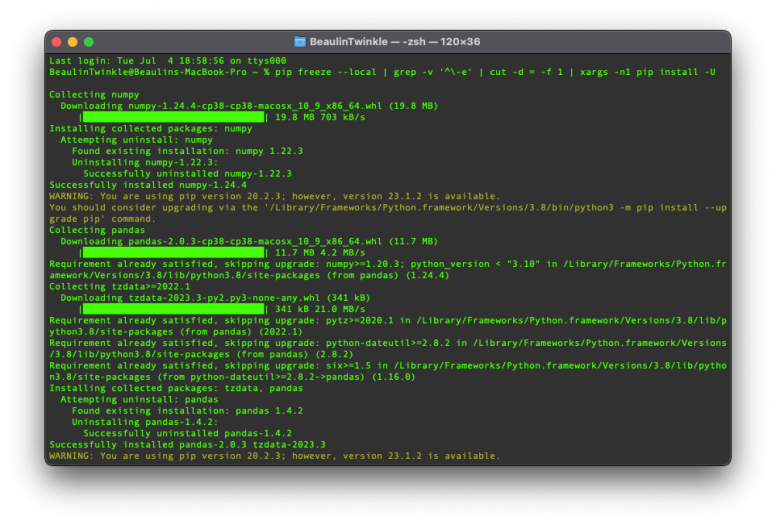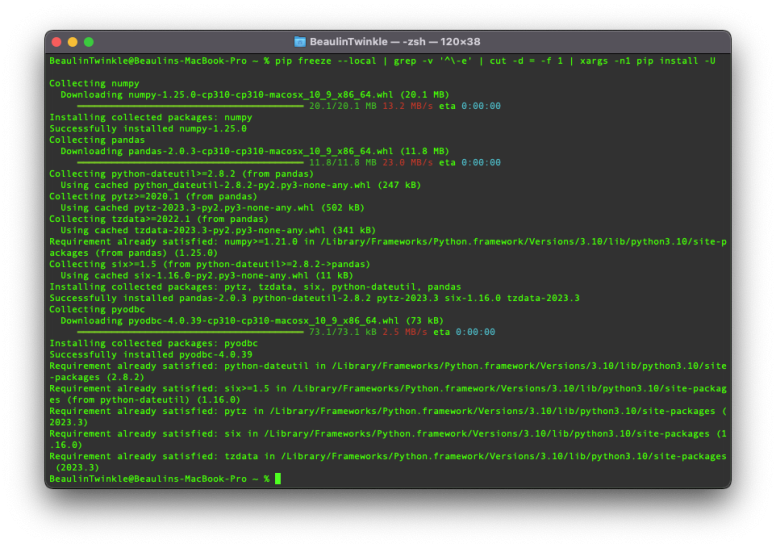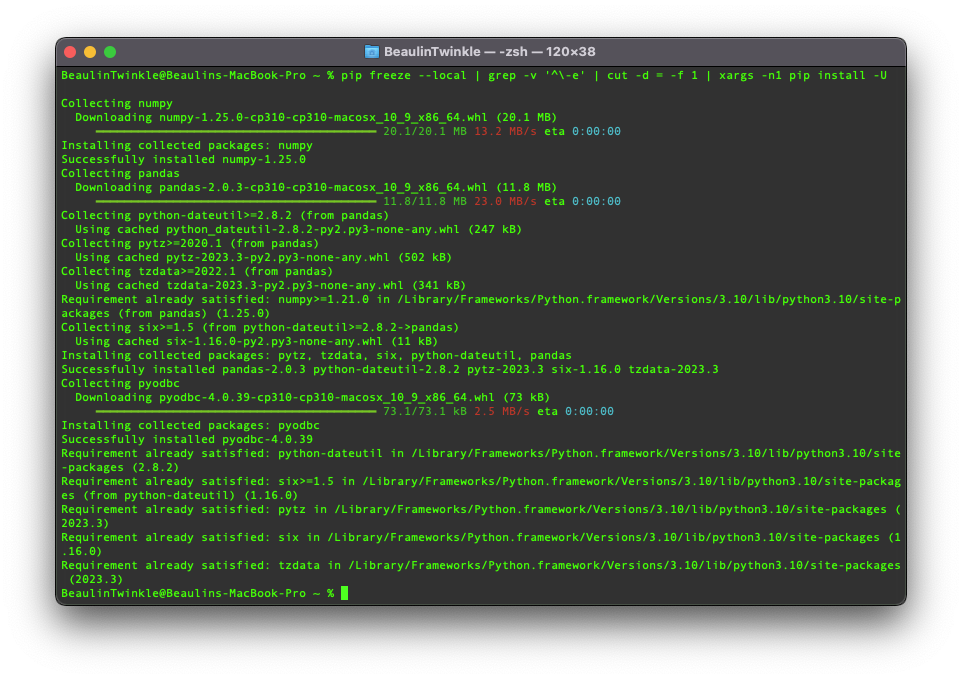In the world of Python development, keeping your packages up to date is crucial for ensuring optimal performance, security, and access to the latest features. However, manually upgrading each package can be time-consuming and tedious. Thankfully, there’s a convenient solution: upgrading all Python packages with pip in a single step. By leveraging the power of pip, the default package installer for Python, you can streamline the process and effortlessly update all your installed packages with just one command.
To upgrade all Python packages installed in your environment using pip, you can use the following command:
pip freeze --local | grep -v '^\-e' | cut -d = -f 1 | xargs -n1 pip install -U
This command works by:
- Using
pip freeze --localto list all installed packages. - Using
grep -v '^\-e'to filter out packages installed in editable mode (-eoption). - Using
cut -d = -f 1to extract only the package names from the output ofpip freeze. - Using
xargs -n1 pip install -Uto iterate over each package name and upgrade it withpip install -U.
This command should work across different Python versions and operating systems that have pip installed. I’ve tested this with both pip 20.2.3 and 23.1.2. Please let me know if you find any problems.
Executing the command with pip version 20.2.3

Executing the command with pip version 23.1.2

Reference
- Read more about pip at pipit.org.

